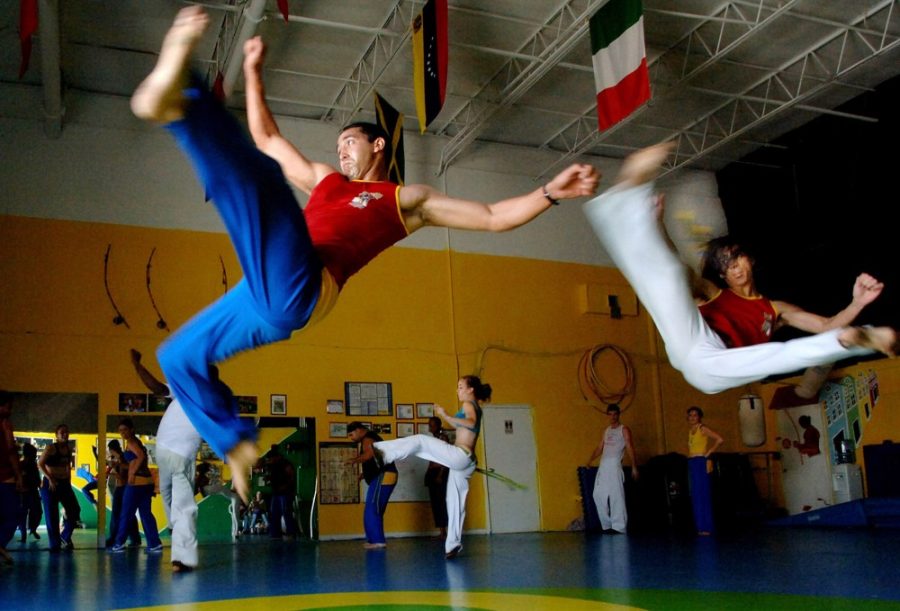Zumba class can get old after a while. It becomes monotonous doing the same dance combination, staring at yourself in the mirror as you trip over the girl next to you. Where is the intensity, the flexibility and creativity to decide your own moves?
Hardly a new art form, Capoeira — an Afro-Brazilian martial art — has been around for centuries, legally and illegally, and has inspired various dance styles like breakdancing.
Offered throughout Tucson and at the Student Recreation Center, you can find yourself falling in love with this self-defense/dance combination that tests your cardio and fighting strength in a match.
Capoeira is a game. Pit against your opponent, you mirror them, moving back and forth awaiting their next move, a kick, a strike or attack of some kind. Your responses can vary — a block, an escape or retaliation. It all depends.
“Every game and combination is different,” said Anne Pollack, owner and master of Capoeira Mandinga Tucson.
Capoeira involves a number of techniques and movements. “The amount of flexibility and creativity you get to use is what makes it fun”, said Pollack.
In Capoeira, the way you interact is a conversation. There is a dialogue that goes on with the opponent: a call and response of movement.
The Mandinga style, which Pollack teaches, is more about making the movements beautiful and effective.
“It’s not choreographed, so there is a whole different realm to work with,” she said.
Music during these fights, or “games,” is what keeps things fluid in Capoeira, and is just as important to the art as the self-defense movements. As you “play,” Brazilian melodies and drumbeats keep you energized.
“Songs bring character and dimension to the whole art form,” Pollac said. The songs are also a call and response between the singer and audience.
Pollack has been teaching Capoeira as a master for more than 15 years. She first discovered it in San Francisco, and after taking one class, she quit her dance background to focus on becoming a master. Pollack has shared her love for Capoeira with many schools in the Tucson community and began teaching the class at the Rec Center before opening up her own studio.
But what became an official art of Brazil in the 1900’s was once illegal. Africans brought this 450-year-old martial art to Brazil during the slave trade era. In order to retain their culture and skill of fighting to escape slavery, African slaves would disguise capoeira with dance and music to make it appear more like a game to avoid punishment from their slave masters.
When their masters realized what they were doing, they forbid its practice and it was illegal from the 15th century until 1965. Capoeira first came to New York City in 1972, and since then it has sparked interests all over the world.
As you advance in Capoeira, like other self-defense arts, you gain a different belt reflecting your newly acquired skill level. But unlike those self-defense classes, in Capoeira, you are also given a Brazilian name that reflects you — and from then on, you are called only that. Pollack’s name? Do Luar do Sertão, meaning “moonlight under the desert outback.”
“Capoeira lets you learn how to find something inside yourself that can drive you to be more creative in your movement or try something you would never do,” Pollack said. “Students come for a lot of different reasons. No matter what the reason or what you want to improve on, it’s going to make them grow.”
For More Information:
Sign up at the Rec Center for next semester classes
Capoeira Mandinga Tucson
www.capoeiratucson.com
520-975-6539
Follow us on Twitter @wildcatarts and follow Cecelia @cecepmarshal.









